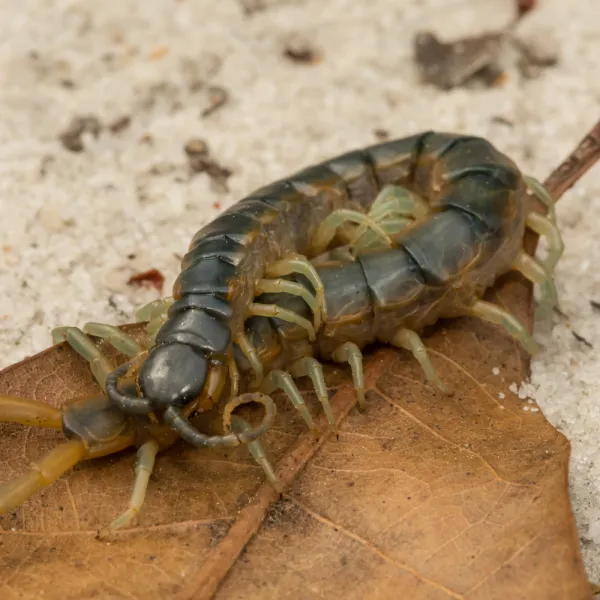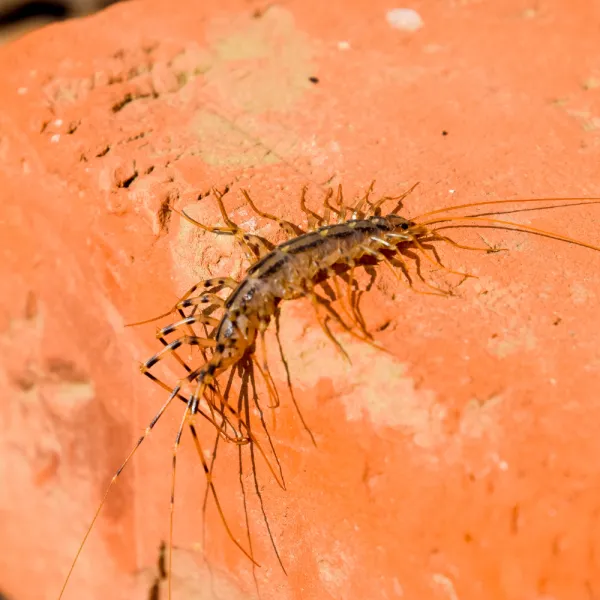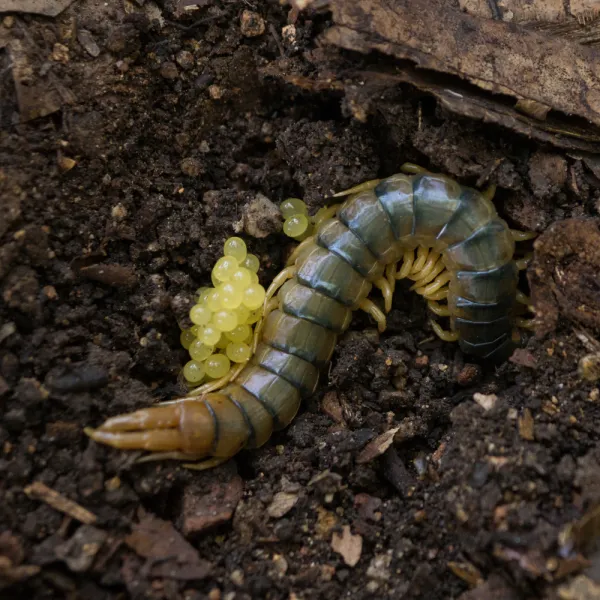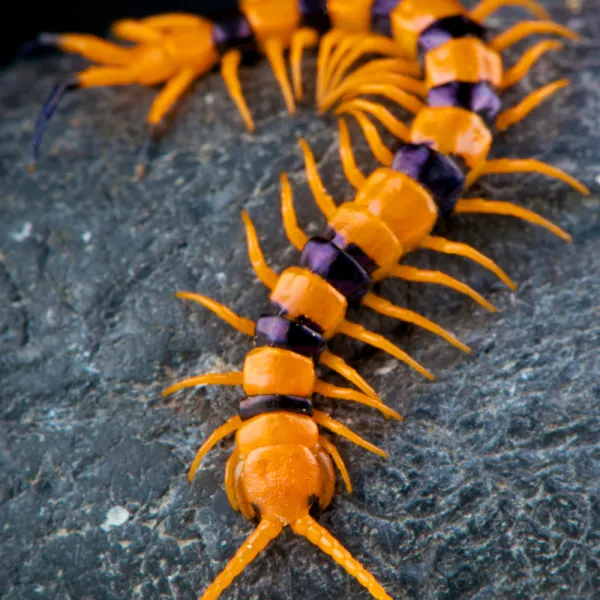Centipedes
JOIN THE PEST FREE NATION.
Centipedes
Centipedes are common arthropods in the Southeastern United States, including North and South Carolina. These creatures are known for their elongated, segmented bodies with a pair of legs on each segment. As nocturnal predators, centipedes feed on insects and small invertebrates. Although they are generally harmless to humans, some species can deliver a mild, venomous bite. PestNation recognizes the importance of maintaining a pest-free environment for homeowners in the Southeast.
Our expert team is equipped to handle centipede infestations effectively, offering solutions tailored to the specific needs and concerns of residents. By using environmentally friendly methods, PestNation aims to address centipede issues while protecting both homes and the surrounding ecosystem.
Types of Centipedes
The Southeastern United States hosts a variety of centipede species, each with distinct characteristics. Common species include the House Centipede (Scutigera coleoptrata), known for its long legs and swift movements indoors; the Eastern Bark Centipede (Hemiscolopendra marginata), which has a reddish-brown color and is typically found in wooded areas; and the Soil Centipede (Geophilomorpha), which lives in soil and leaf litter. Additionally, the Tiger Centipede (Scolopendra polymorpha) is a large, predatory species with striking yellow and black markings.
While centipedes can be beneficial by controlling insect populations, some homeowners may require professional help to manage infestations or address concerns about specific centipede species. PestNation provides expert solutions tailored to the diverse centipede species in the Southeast, ensuring effective pest management while prioritizing the well-being of residents and the surrounding environment.
Eastern Bark Centipede
(Hemiscolopendra Marginata)
Found in wooded areas, this species is known for its reddish-brown coloration.

House Centipede
(Scutigera Coleoptrata)
Recognized for its long legs and rapid movements, the house centipede is common indoors in the Southeast.

Soil Centipede
(Geophilomorpha)
Inhabiting soil and leaf litter, soil centipedes are diverse and play a role in the Southeast's ecosystems.

Tiger Centipede
(Scolopendra Polymorpha)
A large predatory species with distinctive yellow and black markings, the tiger centipede is found in the Southeast.

Decades
Dozens
Thousands
Save More with Bundled Services
PestNation offers value-packed service bundles designed to maximize your savings.
Enjoy comprehensive pest control solutions with our all-in-one packages—exceptional service at a great price. Plus, take advantage of our referral program and earn rewards! Click to learn more.
Frequently Asked Questions
Q What types of centipedes are common in the Southeastern United States?
Common centipede species include the House Centipede, Eastern Bark Centipede, Soil Centipede, and Tiger Centipede.
Q Are centipedes harmful to humans or structures in the Southeast?
Centipedes are generally harmless but can be a nuisance; professional services can address infestations and alleviate concerns.
Q Why are centipedes attracted to homes in the Southeast?
Centipedes seek shelter and prey on insects indoors; PestNation offers solutions to manage centipede invasions effectively.
Q Can centipedes pose risks to vegetation or gardens?
While centipedes primarily prey on insects, some homeowners may have concerns; professional services can address potential issues.
Q How can I identify signs of a centipede infestation in my home?
Signs include the presence of centipedes indoors, especially in damp areas; professional inspection can confirm an infestation.
Q Are centipedes associated with specific environments in the Southeast?
Centipedes are commonly found in damp areas, but species vary in habitat preferences; PestNation considers these factors in pest management.
Q Can centipede infestations be prevented in homes?
PestNation provides preventive measures, such as moisture control and sealing entry points, to reduce the likelihood of centipede infestations.
Q Do centipedes carry diseases?
Centipedes do not transmit diseases; however, their presence can be a concern, and professional services can address related issues.
Q Are there eco-friendly methods for managing centipede issues?
PestNation prioritizes environmentally conscious solutions to manage centipede infestations, ensuring minimal impact on the environment.
Q How quickly can PestNation respond to centipede-related concerns in the Southeast?
We prioritize prompt service, offering swift and efficient solutions to address centipede infestations and alleviate concerns for homeowners in the Southeast.
